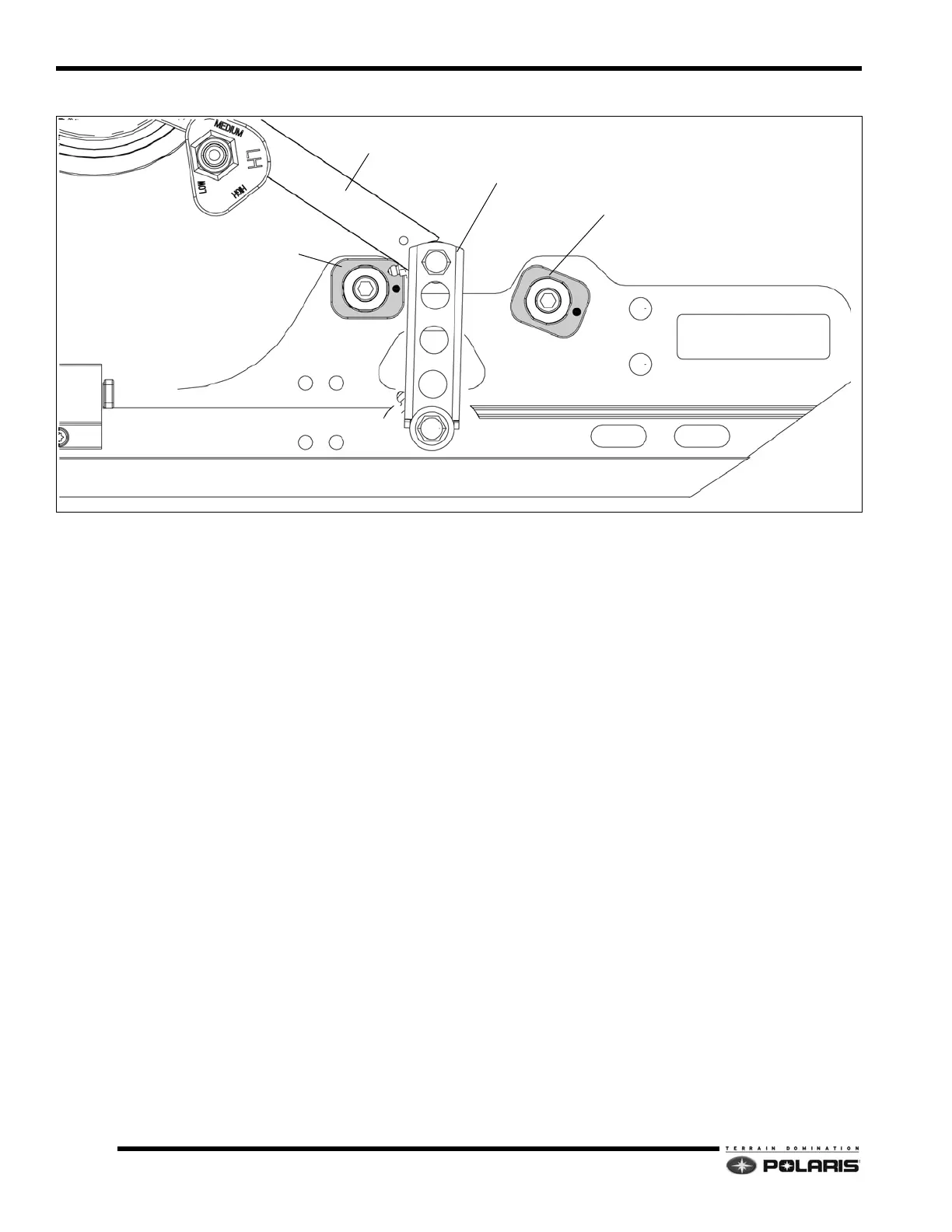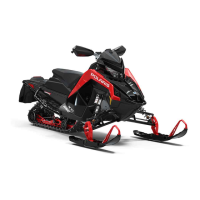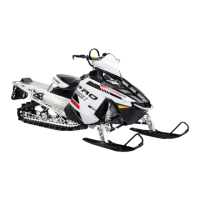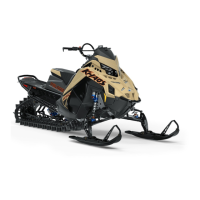8.14
Steering and Suspensions
Scissor Stop Adjustment - INDY Models
The front rear scissor stop (FRSS) controls the bump attitude of the rear suspension. As the front torque arm (FTA) hits
the bump, it forces the rear scissor to collapse a predetermined amount, depending on the FRSS block position.
This accomplishes two important things. First,
it allows a lighter spring rate on the FTA because it can borrow spring rate
from the rear torsion springs. Second, it prepares the rear portion of the suspension for the bump, reducing secondary
kick back.
The recommended FRSS setting is in the HIGH position.
The rear-rear scissor stop (RRSS) controls weight transfer from the
rear suspension to the skis. It also influences the
stiffness of the ride by controlling the amount of coupling action between the front and rear torque arms. To decrease
weight transfer, the RRSS should be set in the high position. To increase weight transfer, the RRSS should be set in the
LOW position.
The dot is an indicator of the HIGH position. The sides are
the LOW position and the bottom is the MEDIUM position.
FRONT REAR SCISSOR STOP
REAR-REAR SCISSOR STOP
REAR TORQUE ARM
REAR SCISSOR (PIVOT)

